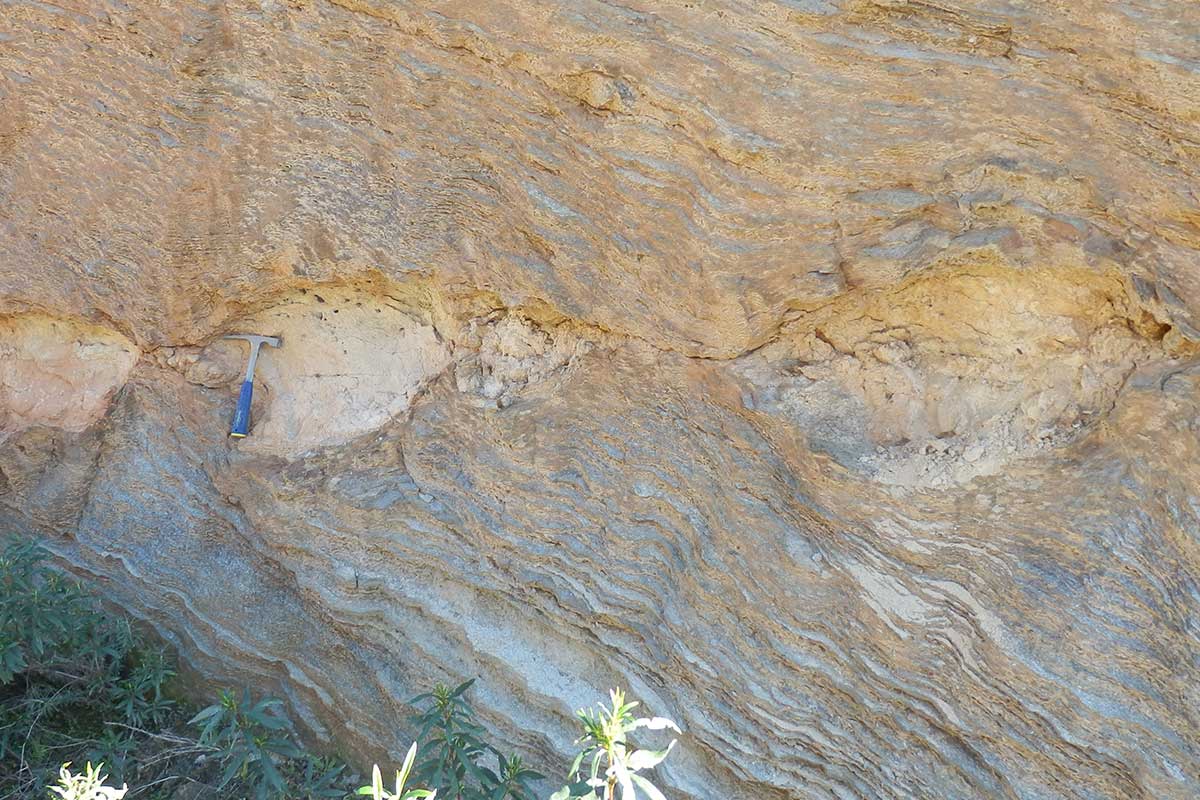Towards the north of this area we can penetrate the area of granite boulders of Bohonal de Ibor. These are of coarse-grained granite with megacrystals of quartz, orthose feldspar, and two micas. We have here intensely fractured rocks with the typical geomorphology of granite boulder areas with their abundance of rounded blocks, boulders, and tors (see the geosite of the Berrocal de Peraleda). These rocks have been formed by rising molten magma (magmatic intrusion) and subsequent cooling inside the earth’s crust. This intrusion broke and assimilated within the magmatic mass the pre-existing rocks, in this case Palaeozoic shales which owing to the magmatic heat have had their texture and mineralogical composition transformed into slates or other schists. This phenomenon is known as contact metamorphism or thermal metamorphism as high temperatures predominate.
The transformations occur due to recrystallisation and involve the regrouping and orientation of the minerals of the slates. New minerals are generated to give rise to different metamorphic rocks depending on the degree of pressure and the temperature, which will be more intense as we approach the contact with the magmatic intrusion. This area is referred to as “contact aureole” or “metamorphic aureole”.
Along the slopes of the road we can encounter slates, micaceous schists, and mica-schists. On the surface these rocks show alterations and a micaceous lustre owing to the high content in the mica laminas (muscovites and biotites) of which they consist. They also show a typical slatiness or schistiness (a division into flat stones with breaks to create multiple parallel planes) which is defined by the laminate orientation of the micas that is acquired by the tectonic efforts generated by the locating of the granite batholite among the Palaeozoic slates.
Different filonian intrusions can also be observed on these slopes in the form of dikes (flat, narrow, and elongated in shape and resulting from magmatic intrusion) wedged into the fractures of slates, sandstones, and quartzites of the Palaeozoic era. Some are of the aplitic type with small crystals that are so light in colour they are almost white; in contrast others are pegmatite in type in which large grains of quartz, micas, and orthose feldspar have crystallised.

